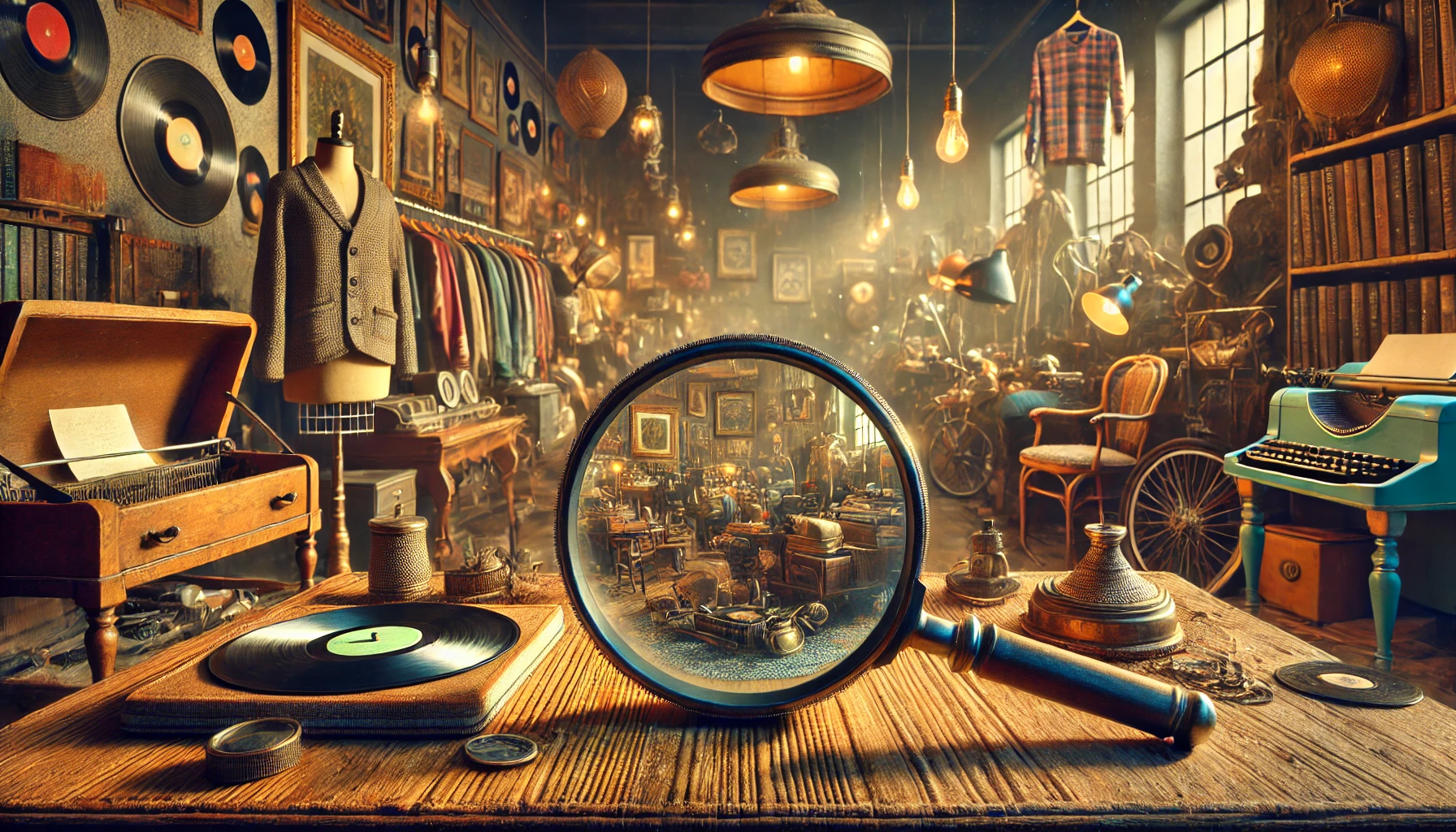We’ve all heard the stories of someone unearthing a priceless vintage piece at a local thrift store. It’s not all down to luck, though. There’s an art to finding these hidden treasures; a combination of knowledge, timing, and attention to detail. So, how do we increase our chances of striking gold in a sea of secondhand garments? Let’s start by peeling back the layers of what makes a piece truly valuable and how to discern the diamonds from the duds. Stick around, and you might just become the next thrift store success story.
Understanding Vintage Value
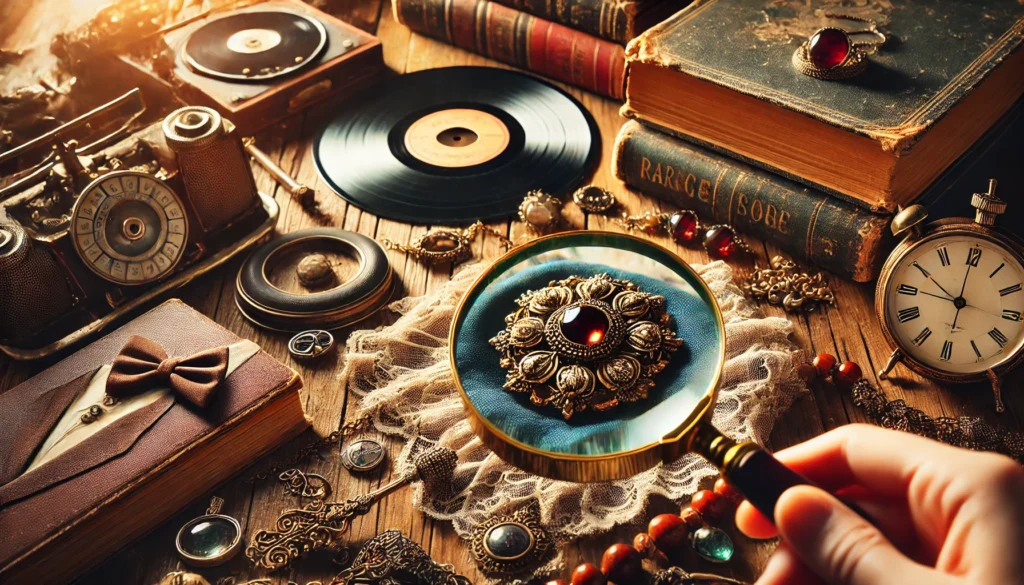
In the world of thrift shopping, understanding vintage value can truly make or break your finds. It’s not just about the age of an item, but about its historical significance and how it fits into vintage trends.
Let’s take shirts from the 70s as an example. They aren’t just old, they’re part of a fashion revolution. Remember the bell-bottom pants and tie-dye shirts? They tell a story of rebellion, individuality, and liberation. That’s where their value lies.
Now, consider that old rocking chair in the corner. If it’s from the Victorian era, it’s not just a chair. It’s a piece of history, a symbol of a bygone era. It’s like owning a small piece of the past, which is why it’s worth more.
It’s not always easy to spot these gems, but it’s worth the effort. We’re not just shopping here, we’re hunting for treasures, for stories, for a piece of history.
And when we find one, it’s not just a purchase, it’s a victory. So next time you’re out thrift shopping, remember: it’s not just about age, it’s about the story.
Research Before Thrift Shopping

Having a keen eye for vintage value gives us an edge, but there’s more to effective thrift shopping. Before we even set foot in a thrift store, we need to do our homework. Research is a key step in our hunt for those hidden gems.
To begin with, get familiar with thrift store etiquette. It’s about more than just ‘please’ and ‘thank you’. Respecting other shoppers, the store’s staff, and the merchandise itself will make our shopping experience smoother and more enjoyable.
In addition, join online thrift communities. They’re a goldmine of information and tips. We can learn from other people’s experiences, get advice on pricing, and even find out about sales and events. Online platforms for secondhand fashion have redefined access to unique finds and encourage sustainable practices.
Furthermore, know what to look for. Learn about different eras of fashion, furniture, or whatever we’re hunting for. Knowing the telltale signs of a vintage piece will help us spot those treasures among the tchotchkes.
Finally, set a budget. Thrifting can be addictive, and it’s easy to get carried away. Having a spending limit keeps us grounded and makes sure that we’re making smart, thoughtful purchases.
Let’s do our research, respect the thrift store etiquette, join the online communities, and happy thrifting!
Best Time to Visit Thrift Stores

With the sun peeking over the horizon, the best time to commence our thrift store adventure often starts early in the morning. Morning visits allow us to peruse through items before the crowd swoops in. You see, most stores restock overnight. So, our chances of finding those vintage gems skyrocket when we’re the first ones in line.
On the other hand, weekend hunting has its perks too. Yes, it’s busier, but it’s also when stores put out their best items to attract the weekend crowd. It’s crucial to weigh the pros and cons of each timing.
To help you decide, here’s a table summarizing our points:
| Time | Advantages |
|---|---|
| Mornings | Freshly restocked, less crowded |
| Weekends | More high-quality items available |
Remember, the key to successful thrift shopping is persistence and timing. The early bird may catch the worm, but the weekend hunter might just snag a golden goose! So, whether you’re a morning riser or a weekend warrior, there’s a thrift store strategy just right for you.
[NEXT SUBTOPIC]: Decoding Thrift Store Labels
Decoding Thrift Store Labels
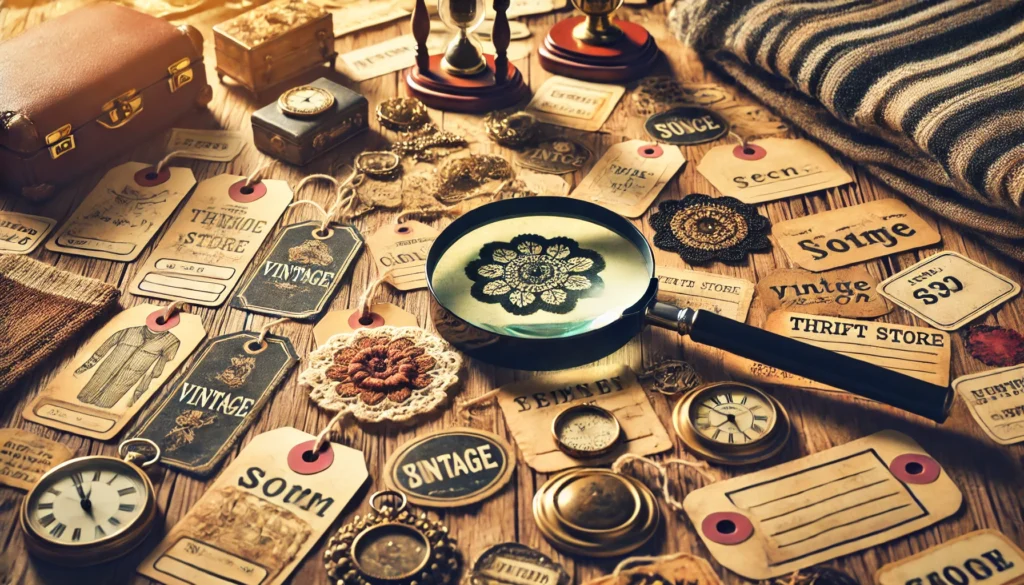
Nearly all thrift stores use labels to price and categorize their items. These labels can be a goldmine of information if you know what you’re looking for. It’s like a secret language between us thrifty shoppers and the store, and we’re here to break it down for you.
There are various label types used but, typically, color-coded or numerical labels are most common. Now, here’s where it gets exciting:
- Color-coded labels usually indicate the item’s age or discount level. For example, red might mean it’s been on the shelf for a week, or it’s 50% off.
- Numerical labels can represent the item’s original price or its markdown percentage.
- Brand labels give us a clue about brand significance. A designer label at a thrift store? That’s a potential jackpot!
- Condition labels such as “new” or “gently used” can greatly affect an item’s value.
Decoding these labels can give you a leg up on finding those hidden gems.
But remember, it’s all about the thrill of the hunt and the joy of the find. So, happy thrifting!
Effective Thrifting Techniques

Now that we’ve cracked the code on thrift store labels, let’s shift our focus to some practical strategies for successful thrifting.
Thrift store etiquette is paramount, it’s not a free-for-all! Be polite, patient, and respect the space of others. If you spot a fellow shopper eyeing a piece, don’t snatch it away. Remember, we’re all here for the thrill of the hunt!
Speaking of hunting, let’s talk bargain hunting strategies. Don’t rush – thrifting is a marathon, not a sprint. Take your time to comb through racks, inspect items carefully, and compare prices.
It’s a good idea to have a list of items you’re on the lookout for, but stay flexible. The best finds are often unexpected!
Also, don’t be afraid to negotiate. If an item is damaged or overpriced, it’s perfectly acceptable to ask for a discount. But remember, be polite and respectful when doing so.
Lastly, frequent visits are key. Stock changes constantly, so the more often you visit, the higher your chances of scoring that perfect vintage gem.
Happy thrifting!
Spotting Reproductions and Fakes
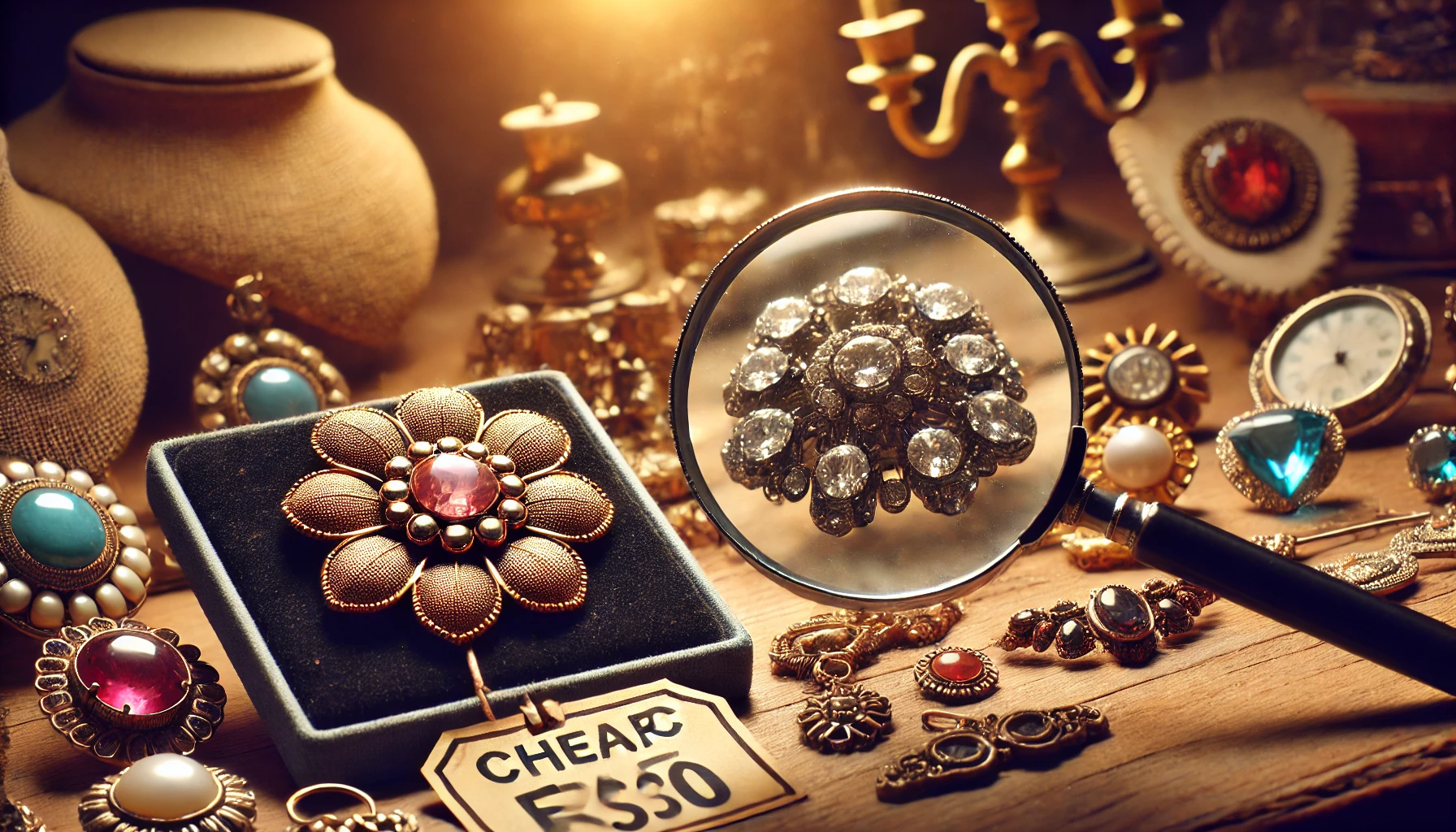
In the world of thrifting, you might come across reproductions and fakes disguised as vintage gems. These impostors can fool even the keenest eye, but we’re here to give you some insider tips on how to spot the real McCoy from the cheap knock-offs.
First, let’s get to know the authenticity signs. These are often details that counterfeiters overlook. For instance, vintage clothing will often have metal zippers, while fakes would use plastic.
Here are four tell-tale signs to help you identify genuine vintage items:
- Check the labels: Authentic vintage items usually have labels that show age, such as faded colors or frayed edges.
- Look at the craftsmanship: Reproduction types often lack the quality and detailing of the original.
- Examine the material: Vintage items often use high-quality fabrics, while reproductions tend to use cheaper alternatives.
- Scrutinize the hardware: Genuine vintage pieces often have unique, aged hardware that can’t be easily replicated.
Don’t get hoodwinked by a clever reproduction. With these tips, we’re confident you’ll be able to spot the real deal from the fakes.
Cleaning and Restoring Vintage Finds

Having learned how to spot the real gems hidden among the fakes, we’re now ready to explore the next exciting part of our vintage treasure hunt journey – giving our finds a new lease on life.
It’s all about rolling up our sleeves and learning some nifty cleaning techniques and restoration tips. A gentle wipe with a soft cloth can work wonders for some items, but others might require a bit more elbow grease.
It’s essential to research the correct methods for your specific items. A little dish soap and warm water can clean most ceramics and glassware. But remember, no dishwasher, folks! It’s too harsh for our delicate finds.
Now, restoring furniture might seem intimidating, but we’re here to make it simple. A touch of wood polish can revive an old wooden table, while a dab of metal polish can make an old brass lamp shine like new.
And don’t worry, there’s no shame in seeking professional help for those tough restoration jobs.
Valuing Your Thrift Store Treasures
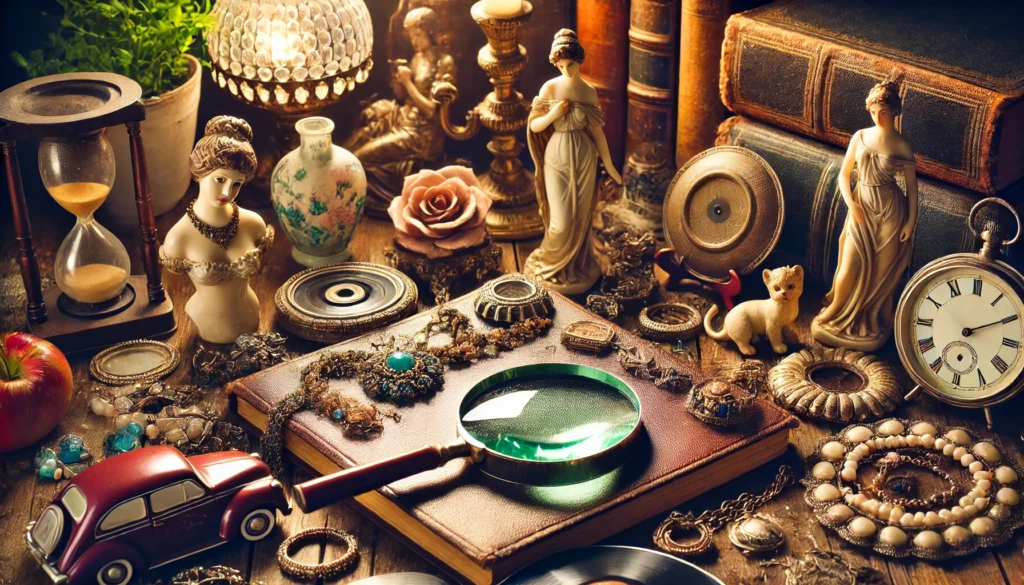
Let’s face it, there’s a thrill in finding out that your thrift store treasure might be worth a small fortune. That dusty painting or vintage brooch can turn into a gold mine with a bit of luck.
But how do we figure out the value of these hidden gems?
Here are four steps to guide you:
- Research: Use the internet or reference books to understand your item’s potential value.
- Appraisal methods: Consult professional appraisers or online appraisal services to know the potential market value.
- Sentimental value: Remember, sometimes the worth of an item lies not in its market value but in its personal significance to you.
- Price Comparison: Check online platforms such as eBay or antique markets for prices of similar items.
While the thrill of the hunt is exciting, it’s equally important to know the value of your finds.
Whether it’s a monetary jackpot or a sentimental treasure, understanding the value adds another layer of satisfaction to your thrift store adventures.
Popular Vintage Items to Look For

Now that we’ve got a handle on valuing our thrift store finds, we can turn our attention to the real fun – spotting those popular vintage items. The thrill of the hunt is exhilarating, isn’t it? We’re talking about vibrant vintage clothing and funky retro furniture.
Let’s start with vintage clothing. Look for pieces that scream the style of a particular era. Think flapper dresses from the 1920s, poodle skirts from the ’50s, or bell-bottom jeans from the ’70s.
Remember, the condition is essential. Gently worn items are much more desirable than those showing significant wear and tear.
Now, let’s move on to retro furniture. Mid-century modern pieces are currently in high demand. Keep an eye out for sleek lines, geometric shapes, and teak or walnut woods.
Don’t forget about retro kitchenware too. Appliances like vintage toasters or mixers can be just as charming!
Turning Thrift Finds Into Profit

A treasure trove of vintage finds can quickly turn into a profitable venture if handled correctly. The trick lies in knowing how to flip and upcycle your thrift store treasures. Here’s how we do it:
- Flipping Furniture: Spruce up old, vintage furniture by giving it a fresh coat of paint or a new finish. A unique piece of furniture can fetch a good price, and the transformation process is pretty fulfilling!
- Upcycling Clothing: Don’t toss out clothes with minor flaws. Instead, get creative! Transform them into trendy pieces by adding patches, embroidery, or even dyeing them a new color.
- Online Selling: Platforms like Etsy, eBay, and Poshmark are perfect for selling your refurbished items. Good pictures and descriptions can attract buyers from all over.
- Local Markets: Don’t underestimate the power of local flea markets or yard sales. They’re a great way to sell and gain local recognition.
Conclusion
So, we’ve revealed the secrets of thrift store treasure hunting, huh? With our newfound knowledge, we’ll be spotting vintage gems in no time! Remember, patience and persistence are key. Don’t despair if you don’t find a 1960s Chanel dress on your first try. Keep hunting, and who knows? Maybe we’ll stumble upon an Elvis Presley original vinyl or a Picasso doodle on a napkin! Now, let’s roll up our sleeves, hit the thrift stores, and let the vintage adventure begin!

